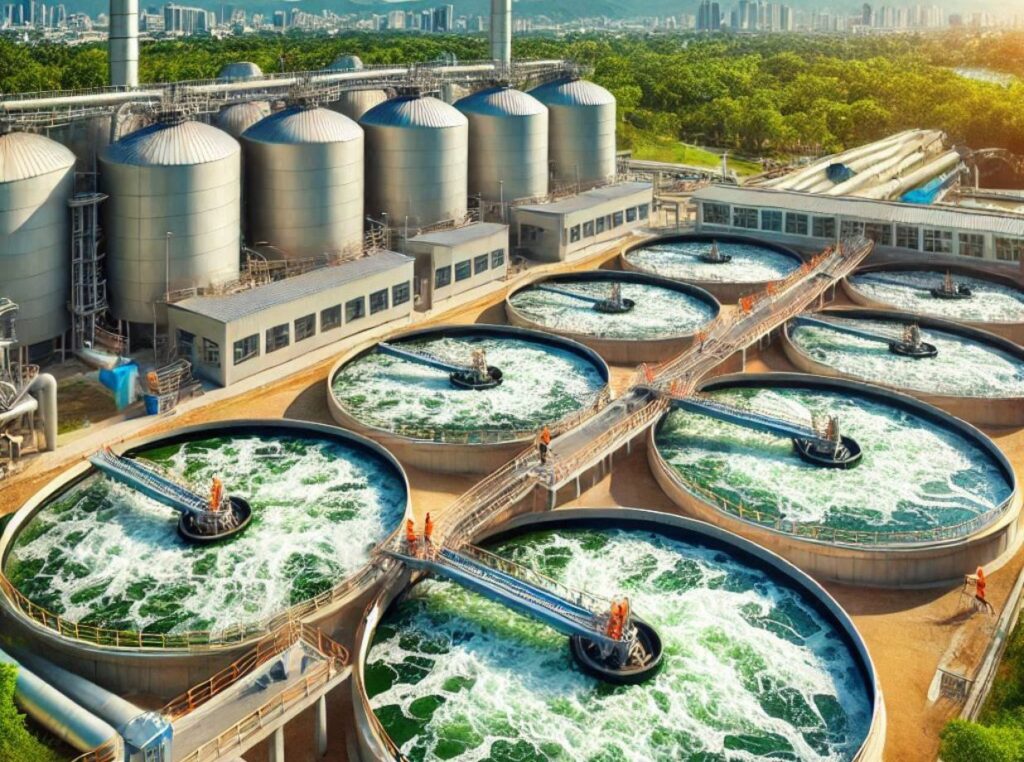
Here’s something that might surprise you: every time you flush your toilet or run your dishwasher, you’re starting a fascinating chemical process that keeps our water systems healthy! At the heart of this process is something called Biochemical Oxygen Demand, or BOD for short. Don’t worry if that sounds complicated – I’m here to break it down in simple terms.
What is Biochemical Oxygen Demand?
Think of BOD like a hungry monster in the water that eats up oxygen. When organic matter (like food scraps, human waste, or leaves) gets into water, tiny microorganisms start breaking it down. Just like us, these microscopic cleanup crews need oxygen to do their job. The amount of oxygen they need is what we call BOD.
A real-world example makes this easier to understand: imagine dumping a bucket of food scraps into a pond. The microorganisms in the water will immediately get to work breaking down this organic matter, using up oxygen in the process. If too much oxygen gets used up, fish and other aquatic life might not have enough left to survive. That’s why measuring and controlling BOD is so important!
Measuring BOD in Wastewater Treatment
You might be wondering how we actually measure something like oxygen demand. Well, it’s pretty clever! Treatment plant operators take a water sample and measure how much oxygen is in it. Then they store it in a special dark bottle for five days (that’s why you might hear people talk about “BOD5”). After five days, they measure the oxygen again. The difference between these two measurements shows how much oxygen those hungry microorganisms consumed.
It’s kind of like checking your car’s fuel gauge before and after a long trip – the difference tells you how much fuel you used. Except in this case, we’re tracking oxygen instead of gasoline!
Why BOD Matters for Our Environment
Remember that pond example earlier? Well, the same principle applies to all our water systems. If wastewater with high BOD gets released into rivers or lakes, it can cause some serious problems:
First, it can lead to something called “dead zones” where there isn’t enough oxygen for fish and other aquatic life to survive. Think of it like having too many people in a small room – eventually, you run out of air to breathe!
Plus, high BOD can cause nasty algae blooms that can make water look and smell terrible. Nobody wants that in their local lake or river!
How We Control BOD
The good news is that modern wastewater treatment plants are like superhero facilities for fighting high BOD! Here’s how they do it:
First, they use special tanks full of helpful bacteria that love eating up organic matter. These beneficial bugs do the heavy lifting, breaking down waste and reducing BOD levels.
Then, treatment plants use aeration systems – think of them like giant aquarium bubblers – to add oxygen back into the water. This helps keep our microscopic helpers happy and working efficiently.
Finally, operators constantly monitor BOD levels to make sure everything’s working properly. It’s like having a team of scientists making sure our water stays clean and safe!
Tips for Reducing BOD at Home
You can help reduce BOD too! Here are some simple things you can do:
- Don’t put food scraps down the drain (compost them instead!)
- Use your garbage disposal sparingly
- Never dump cooking oil or grease down the sink
- Pick up after your pets (pet waste contributes to BOD!)
The Future of BOD Treatment
Exciting things are happening in the world of wastewater treatment! Scientists are developing new technologies like advanced sensors that can measure BOD in real-time (instead of waiting five days) and smart systems that can automatically adjust treatment processes for maximum efficiency.
There’s even research into using artificial intelligence to predict and control BOD levels! It’s like having a super-smart assistant helping to keep our water clean.
Conclusion
BOD might not be dinner table conversation, but it’s incredibly important for keeping our water systems healthy and clean. Every time you see a clear, clean river or lake, you can thank the hardworking treatment plant operators and those invisible microscopic helpers who manage BOD levels!
Remember, we all play a part in protecting our water resources. By understanding BOD and making smart choices at home, we’re helping to ensure clean water for everyone – and everything – that depends on it.
Have questions about BOD or wastewater treatment? Your local water treatment facility probably offers tours and educational programs. It’s fascinating stuff, and the people who work there are usually thrilled to share their knowledge!